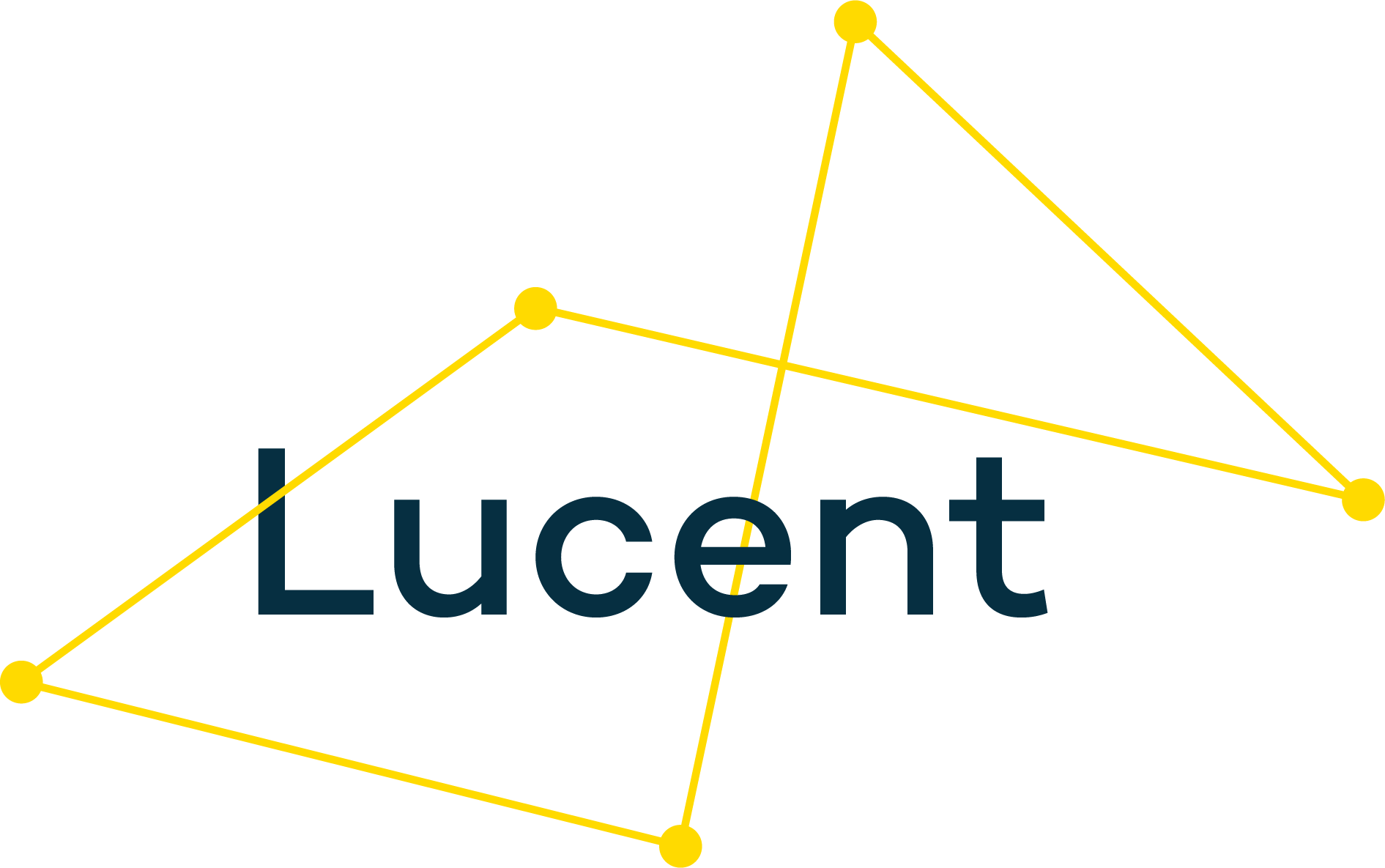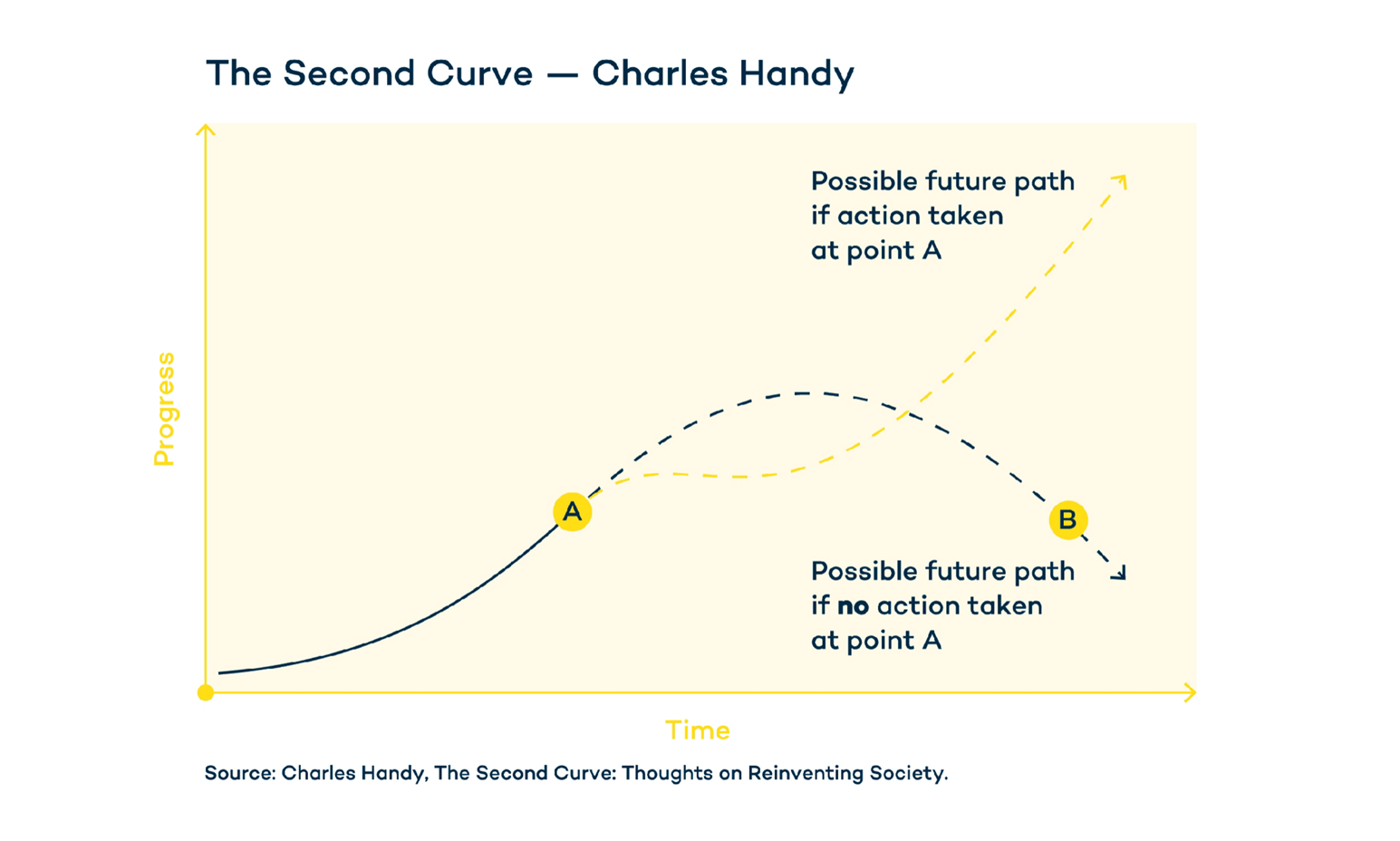A free tool to help your business stay ahead of the curve
Use Charles Handy's Second Curve principle to harness the power of positive momentum, and start reinventing yourself before you’ve reached your organisation's natural peak.
Put this into practice through workshops with your senior leadership team, or by using the Lucent Compass framework.
Like all useful tools, Charles Handy’s Second Curve centres on a simple idea – that all human creations follow a cycle of investment, growth and then decline.
Handy recognises that the pull of comfort and the status quo is strong and that all organisations need to work hard to support adaptation and innovation.
Making the case for change when an organisation is in a period of growth and success can be particularly challenging as there no immediate imperative or burning platform for change. People find it difficult to recognise that what got them here, won’t necessarily get them there, through the next stage in their organisation’s journey.
“The key to preventing your organisation or partnership slipping into decline is to start reinventing yourself before you’ve reached your peak.”, Handy explains. “By taking action at point A, when your organisation is flourishing and in a period of growth, you give it the best possible chance of success. Conversely if you wait until point B, when the signs of decline are evident, you will have fewer options, less time and your actions may simply be too late.”
To put this tool into practice, we'd recommend hosting a series of workshops, interviews or focus groups with your key stakeholders. You could focus on the following questions:
Where are you on the Handy curve?
What strengths underpin your current successes?
Given the external opportunities and challenges facing your organisation, what new strengths need building?
What no longer serves you and how will you support your team to say goodbye to those ways of working or activities?
Leading through a period of change involves communicating about the strengths and successes you have to build on, but also the need for new ideas, innovation and investment that will help you realise future success in an ever-changing context.
With information garnered from the above questions, you'll be able to objectively understand your current position on the Handy scale, and define the right routes forward for your business.
We're always here if you'd like some additional support.
Resources: Charles Handy: The Second Curve: Thoughts on Reinventing Society

